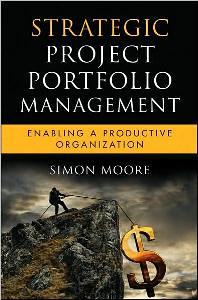
Between 2001 and 2005, the FBI’s Virtual Case File project failed. The Virtual Case File project was part of a larger initiative called Trilogy. Costs overran by 89% or just over $200M. A project that should have taken 3 years, failed after 4 years with requirements still not met. In some ways this project is similar to the London Stock Exchange’s Taurus Project, where scope creep lead to the project (at least as initially envisioned) being cancelled after massive cost overruns. This analysis draws on a very detailed report from the Office of the Inspector General, but here we focus explicitly on the project management failings.
The FBI’s Trilogy project contained three parts:
- Upgrading software and hardware for FBI agents
- Upgrading the FBI’s communications network
- Significantly upgrading the FBI’s case management system (Virtual Case File) to enable better access to, and sharing of, case-related information across the FBI
The first two elements of the project were completed, not perfectly or all that impressively, but roughly as planned. However, the Virtual Case File project experienced major cost and schedule overruns and never achieved its objectives. It is widely used as an example of a failed IT project.
Vague and inappropriate requirements
As with all the cases of project failure that this blog has explored (the Sydney Opera House, the 2010 Census, the Channel Tunnel, Denver Airport and the H1N1 vaccination program) the heart of the problem is vague requirements. “Trilogy’s design requirements were ill-defined and evolving as the project progressed.”
Scope creep
It’s perhaps inappropriate to use the term scope creep for a project where scope is never clearly defined. But the political climate created by the September 11 attacks and reports into the Oklahoma City bombings in March 2002 increased pressure on the project to produce results faster (regardless of what was feasible). In addition, the Hanssen espionage case, one of the most significant in the FBI’s history as portrayed in the movie Breach, raised the bar for security requirements for the Virtual Case File system. According to one report on the project. “Trilogy’s scope grew by about 80 percent since initiation of the project.” Of course, if scope is increasing faster than work is being complete, it will be impossible for any project to finish.
Scheduling by desired outcomes, not resource based estimates
In my book, I describe this as this as the King Canute approach to project management, just because you’re a powerful executive and you want something to be complete faster than 3 years, does not mean that that is possible given the scope of work and resources allocated. However, the scheduling for the Virtual Case File project focused on what was desired, not what was possible. Two quotes from the report illustrate this:
“The FBI also developed plans to accelerate completion of Trilogy because at the time the project’s 3-year modernization timeframe was considered too long.”
“The contractor disagreed with the resulting schedules, because the schedules showed that the full implementation of the project exceeded the proposed completion date of the project.”
It is easy to see these errors with the benefit of hindsight, but in the pressure of the moment it is all to do easy to massage the timeline to make it look as if you might hit the desired outcome, on paper at least.
Cost plus contracting
The interests of the FBI and the contractors working on the project were not aligned.“The cost-plus-award-fee type of contract used for Trilogy…did not require specific completion milestones…and..did not provide for penalties if the milestones were not met.” Arguably, this is a result of vague scope, but in addition to vague language the incentives created by cost plus pricing, made it hard for the FBI to hold their contractors accountable.
Lack of clear ownership
Tellingly, a project manager was appointed only late into the project, the FBI cycled through 5 people in the CIO role in 4 years and accountability appears generally absent due to “decision making by committees instead of knowledgeable individuals.” In addition to a lack of accountability at the contractor level, there was a need for clearer accountability within the FBI. Lack of clear accountability structures is a clear theme in failed projects as the Eurofighter project shows.
See more analysis of project failure here on this blog and at www.projectcasestudies.com.









